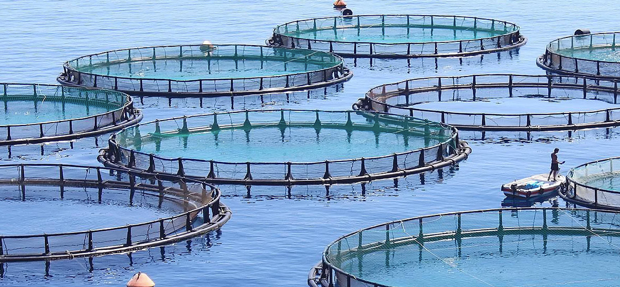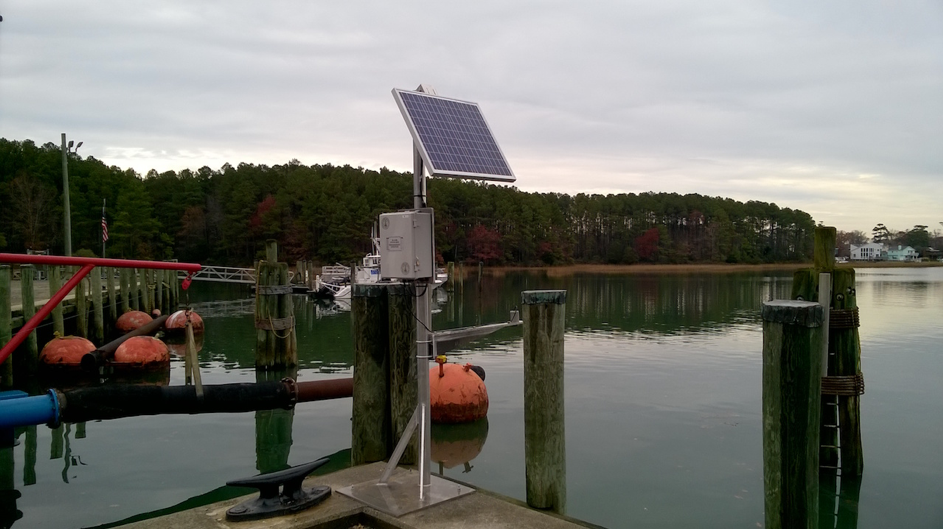D1.1 Technology survey: Prospective and challenges - Revised version (2018)
4 ICT based systems for monitoring, control and decision support
4.6 IoT trends and relation to Water Management
Nowadays, the Internet of Things (IoT) has become for many of us a new image of how the future will look like in the upcoming years, since, during each of the past few years, the number of devices that can have Internet access has been consistently increasing. More and more devices and sensors are interconnected; they can be easily controlled remotely, and the multitude of data types being generated lays the groundwork for outstanding opportunities in terms of innovative products and services.
IoT Platform-as-a-Service (PaaS) providers ensure that all data collected by sensors or other similar devices is received and sent to other services where it can be stored, viewed, analyzed and used to generate a response for other devices, in a highly available, scalable and secure way. The providers also offer software developments kits (SDKs) that help developers to quickly connect hardware devices to their platform. Naturally, there are many suppliers on the market that provide powerful IoT PaaS services, such as Amazon AWS IoT, Microsoft Azure, Google Cloud Platform, or IBM Watson Internet of Things. Adhering to similar architectural principles, they use the following components: message broker, rule engine module, security and identity module, a module that knows the state of sensors or connected devices. Each provider supports bidirectional communication between hardware devices and platform, but with different implementations. Amazon uses a message queue to send messages to a device that is subscribed to a certain topic. On the other hand, Azure provides two endpoints that are used to send and receive data. All mentioned platforms use the HTTP and MQTT protocols. Another important aspect of IoT platforms is given by the SDK languages support. IBM Watson IoT and Azure offer SDKs for Java, C#, Python, NodeJS and C, while AWS only for C and NodeJS.
Nevertheless, despite their undeniable strengths, the aforementioned solutions suffer from a common condition. Clients who desire to use their services, besides having to program their hardware in the supplier’s paradigm, must also possess knowledge on how to create their own piece of application to interpret the raw data received.
There are other several other projects which try to address these issues, such as Kaa IoT, a flexible, multi-purpose, open-source middleware that offers features similar to AWS or Azure IoT. The main advantage is given by the possibility to be hosted in private, hybrid or public clouds. Kaa provides the possibility to store data on Apache Cassandra and MongoDB but comes up short in regard to filling the client-technology gap.
The problems described above were also indicated by Gartner in a 2016 report (Iot adoption is driving the use of platform as a service - press release), which suggests that, because of the existent gaps, companies would rather prefer to develop an in-house container service. It is also predicted that this approach will fail to meet expectations through 2018, leading to a major shift towards high-productivity and high-control PaaS options, generically defined as hpaPaaS (High-Productivity Application Platform as a Service).
Fortunately, such specialized products today started appearing also for Water Management. For example, Libelium, one of the biggest IoT HW producers in Europe, commercializes an off-the-shelf Smart Water Sensors to monitor water quality in rivers, lakes and the sea. Equipped with multiple sensors that measure a dozen of the most relevant water quality parameters, and using cellular (3G, GPRS, WCDMA) and long range 802.15.4/ZigBee (868/900MHz) connectivity to send information to the Cloud, the Waspmote Smart Water is a water quality-sensing platform to feature autonomous nodes that connect to the Cloud for real-time water control.
Figure 8. The Libelium Waspmote Plug & Sense! Smart Water model.

Waspmote Smart Water is suitable for potable water monitoring, chemical leakage detection in rivers, remote measurement of swimming pools and spas, and levels of seawater pollution. The water quality parameters measured include pH, dissolved oxygen (DO), oxidation-reduction potential (ORP), conductivity (salinity), turbidity, temperature and dissolved ions. It can actually be used as a portable water monitoring unit and can be quickly linked to the Libelium dashboard for on-the-spot data visualization.
Another interesting ready-to-use IoT product is the Blue Isles BiomeHM-IA IoT Water Monitoring Buoy that can monitor water quality in real time from any remote location, helping to proactively manage and ensure your successful marine farm production or marine environment monitoring.
Figure 9. BiomeHM-IA being used for Remote Aquatic Monitoring.

The Blue Isles BiomeHM-IA™ Buoys exports data in real time. It has integrated solar panels which charge an internal battery which in turn powers your sensor of choice and the cellular gateway. Reports are stored in the cloud so viewing the data is easy.
In general, Industrial IoT sensor monitoring can help smart cities with effective Flood Warning Systems. We’ve got a lot of options today for how to monitor water levels. Typically, ultrasonic sensors send out sound waves to determine fluid levels, whether your organization is monitoring chemicals in tanks or measuring river water levels from a bridge. Ultrasonic sensors measure how much time it takes for the echo to hit the target (e.g., water) and return to the sensor.
Figure 10. Ultrasonic Level Sensors for water monitoring.

Unlike this, radar sensors use probes to guide high frequency radar and electromagnetic waves from the sensor to what you’re monitoring the level of, e.g., water. Based on how long the radar pulse takes to return after it’s been sent, radar level sensors output your level readings. Typically, radar sensors are more expensive than other types of level sensors. However, waves and pulses output by radar sensors can often penetrate things that might interfere with true level measurements, e.g., foam or vapor. For this reason, one has to decide which level sensors, or combinations of level sensor technologies, will work best depending on specific scenarios.
In IoT environments many sensors produce large quantities of data that require to be processed in real-time. Such situations may be found in several important domains, such as smart farming, water management or smart cities. The authors of [Dincu, 2016] studied the main approaches of handling the sensor data processing in several use cases and proposed an implementation based on an open source distributed stream processing framework. The first objective was to place two of the most widely used processing engine frameworks in a smart farming context. The authors performed several benchmarks and uncovered some of the limitations of the software from multiple perspectives like performance and scalability. The second objective was to propose solutions to exceed these limitations by developing an optimized scheduling algorithm that enhances the scalability of the system and provides lower overall latency. The overall solution has the capacity to store and process historical data for advanced analytics. The effectiveness of the solution has been validated by experiments in a large cluster, using data from sensors within a smart farming. While the experiments had been limited to sensor data obtained from greenhouses, the solution can be easily generalized to multiple IoT domains.
Traditional IoT systems have been built as isolated solutions for each problem domain. However, many of such systems usually share common spatial-temporal resources. For example, water management systems and farming systems can operate on the same land surfaces while weather conditions might affect both. In this sense the global IoT vision aims to integrate distinct problem domains into a unified network in order to offer enriched context and meaningful correlations. The global information technology platforms accommodating multiple IoT sensor network will therefore have increased data processing requirements. Paper [Huru, 2018] presents the main technical challenges and non-functional requirements demanded by such a platform. The authors propose a cloud-based data processing architecture able to cope with these requirements. This solution integrates a collection of frameworks and offers enhanced reusability and scalability in a multi-tenant setup. It relies on a service-oriented architecture and offers real-time processing capabilities, advanced reasoning and auto-scaling. In the end the authors validated the solution with a reference implementation and demonstrated that it can accommodate an IoT solution where cross-domain correlations can be done and a bigger picture is revealed.